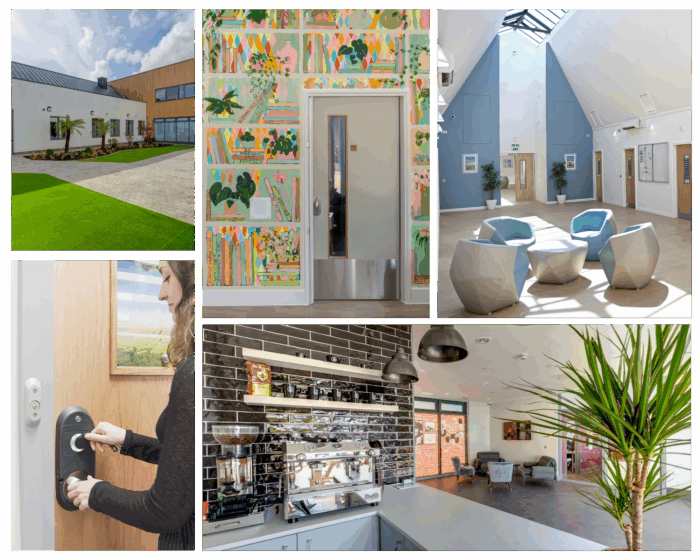Sadly, 90% of people experiencing depression also struggle with sleep pattern disturbance.
“Poor sleep leads to worrying. Worrying leads to poor sleep. Worrying about sleep is like your mind trying to fight itself. That’s a horrible place to be (Mind, 2020).”
Sleep. Every person has experienced the frustration of being unable to sleep at night. Research suggests a strong link between sleep deprivation and mental health. This is particularly concerning for patients within inpatient mental health spaces already dealing with poor mental health.
Evidence also considers that a patient’s environment significantly impacts their sleeping pattern during recovery.
Currently, many mental health facilities can be seen as difficult places to keep up with good sleep hygiene. Patients can often experience sleeping disorders like insomnia that further worsen their mental health state.
Factors such as lighting, noise and regular night-time observations of the patients can leave them unsettled and too anxious to relax during the night. It’s disheartening to hear that the place where a person is meant to recover can prevent them from getting better based on their environment. The lack of sleep, in many cases, can impact the length of time a service user spends in a hospital, as they take longer to heal.
Watch our founders, Philip Ross & Martin Izod, telling the story about their friend’s challenges with sleep deprivation in mental health hospital VIDEO LINK:
Watch the video in full on Our Story Page VIDEO LINK STORY PAGE.
5 ways design can improve mental health inpatient environments
Bedrooms designed for better sleep can significantly impact anxiety, and sleep deprivation and a patient’s recovery time in mental health spaces. Here are some ways that design can help:
- Comfortable and calming environment: Creating a comfortable and calming environment can help reduce stress and anxiety levels in patients, ultimately leading to faster recovery times and less frequent sleep fragmentation.
- Access to nature: Introducing nature into the design of mental health spaces can positively impact patients’ mental health. Exposure to nature has been shown to reduce anxiety and depression levels.
- Privacy and personal space: Providing patients with privacy and personal space can help them feel more comfortable and in control of their environment. One way of doing this is to provide independent access to patients’ bedrooms with an Electronic Access Control System LINK
- Encouraging social interaction: Designing communal spaces such as lounges, gardens, or outdoor spaces can encourage social interaction between patients, which can help to combat feelings of isolation and improve mental well-being.
- Art: Introducing art into the design of mental health hospitals can provide patients with a creative outlet for self-expression, which can help improve their mental health and overall well-being. Mental health charity Hospital Rooms LINK specialises in bringing the healing power of art into clinical mental health inpatient environments. We’re proud to be supporting the charity by incorporating two of their original artworks into our Anti-Ligature En-Suite Doors LINK. Find out more about our partnership LINK and the healing power of art LINK.

By considering these factors in the design of mental health spaces, patients can have an improved experience and potentially reduced recovery time.
Safehinge Primera is dedicated to design
Here at Safehinge Primera; we’re committed to improving the design of mental health hospitals by supporting the creation of safe, comfortable, and therapeutic spaces for patients. We are proud to do our part to make a real difference in the lives of people who suffer from poor mental health and create products that allow for better sleep, helping to improve recovery.
One example of this is our soft closing door vision panels LINK on a bedroom door which can provide a sense of security and privacy, enhancing a person’s sleep while still allowing staff to monitor a patient’s well-being. It can also help patients feel less isolated and more connected to the outside world by letting them choose to see or be seen by staff and visitors. Additionally, it can help staff quickly respond to any potential safety concerns or emergencies. A range of glass panel designs is available to support the creation of a recovery-led environment. Check out our Door Designer Tool LINK to discover what’s possible!

Unfortunately, In some mental health environments in the UK, staff members must open the door to conduct nighttime observations because these facilities lack a vision panel. This can cause concern as it may disrupt the patient’s sleep, cause discomfort or anxiety, and increase agitation or other negative behaviours. These facilities must be supported to address these issues and implement appropriate solutions to ensure the safety and well-being of all involved to promote sleep and recovery.
Find out more about how you can incorporate some of the patient-centric design practices discussed in this article by getting in touch with our team LINK TO FORM.
